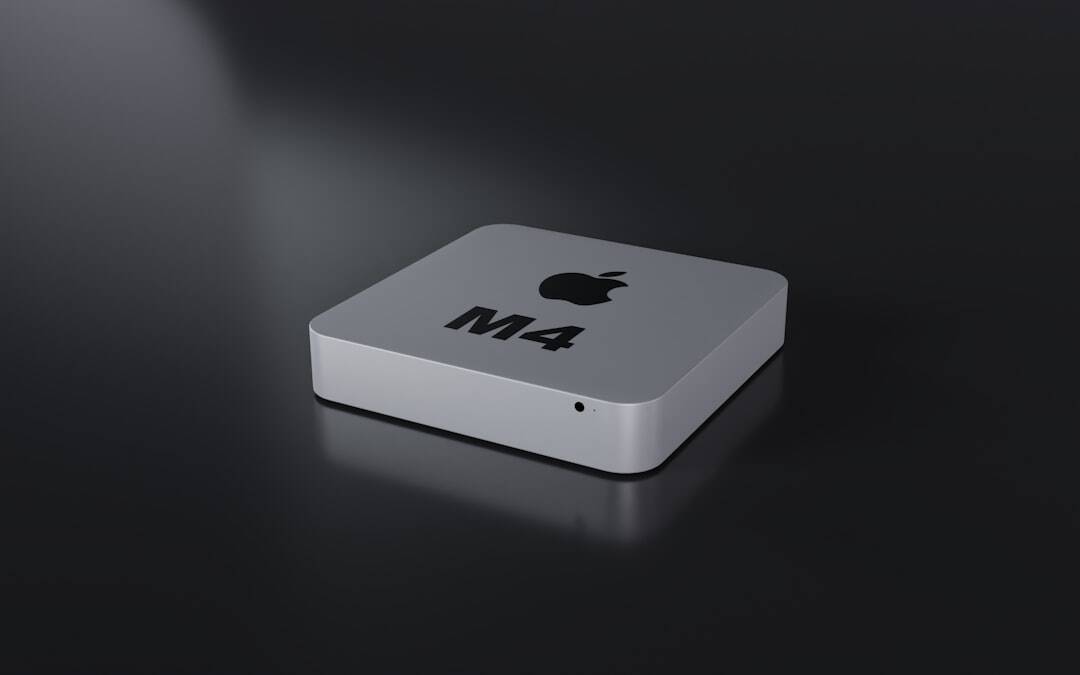Artificial Intelligence (AI) has a long history, with roots tracing back to ancient times. However, significant progress in the field occurred during the 20th century. The term “artificial intelligence” was coined by John McCarthy in 1956, marking a pivotal moment in AI’s development.
Since then, AI has experienced rapid growth and evolution. Deep learning, a subset of machine learning, represents one of the most important advancements in AI. This approach utilizes neural networks to emulate human decision-making processes.
Deep Learning has transformed AI by enabling machines to learn from data and make autonomous decisions. The technology’s success is largely due to the increased availability of large datasets and the development of powerful computational tools. Deep learning algorithms are designed to mimic human brain function in processing information.
This allows machines to identify patterns, make predictions, and solve complex problems. As a result, deep learning has significantly enhanced AI capabilities across various sectors, including healthcare, finance, and transportation. The progression of AI and deep learning has been driven by collaborative efforts among researchers, engineers, and technology companies.
NVIDIA has been particularly influential in advancing AI technology through its development of high-performance computing hardware and software. By providing powerful GPUs and specialized software frameworks, NVIDIA has enabled researchers and developers to train and deploy deep learning models at scale, contributing to significant advancements in AI capabilities.
Key Takeaways
- AI and deep learning have evolved significantly, enabling machines to learn from data and perform tasks that were previously only possible for humans.
- NVIDIA has played a crucial role in advancing AI technology through its development of powerful GPUs and software frameworks that support deep learning.
- Deep learning has greatly enhanced AI capabilities, allowing for more accurate and efficient data processing, pattern recognition, and decision-making.
- NVIDIA’s deep learning technology has been applied across various industries, including healthcare, automotive, finance, and more, revolutionizing processes and driving innovation.
- Challenges in implementing deep learning for AI, such as data privacy concerns and ethical considerations, can be overcome with careful planning and responsible development, paving the way for future possibilities and innovations in AI with NVIDIA’s technology.
NVIDIA’s Contribution to Advancing AI Technology
Accelerating Deep Learning with CUDA
One of NVIDIA’s most significant contributions to advancing AI technology has been the development of the CUDA parallel computing platform. CUDA allows developers to harness the power of NVIDIA GPUs for general-purpose computing, making it possible to accelerate a wide range of applications, including deep learning. This has significantly reduced the time and resources required to train deep learning models, making it more accessible to researchers and developers.
Optimizing Deep Learning with cuDNN
Furthermore, NVIDIA’s cuDNN library provides optimized primitives for deep learning, such as convolutional neural networks and recurrent neural networks, further accelerating the training and inference of deep learning models.
Driving AI Adoption Across Industries
These advancements have not only improved the performance of AI systems but have also paved the way for new innovations in AI research and development. Overall, NVIDIA’s contributions have been crucial in driving the widespread adoption of deep learning and advancing AI capabilities across various industries.
The Impact of Deep Learning on AI Capabilities

Deep learning has had a profound impact on AI capabilities, enabling machines to perform complex tasks with a level of accuracy and efficiency that was previously unattainable. One of the key advantages of deep learning is its ability to automatically learn features from raw data, eliminating the need for manual feature engineering. This has allowed AI systems to process unstructured data such as images, audio, and text, leading to significant advancements in computer vision, natural language processing, and speech recognition.
In addition to its ability to process unstructured data, deep learning has also improved the performance of AI systems in tasks such as classification, regression, and reinforcement learning. Deep learning models can learn from large datasets and generalize their knowledge to make predictions on new data, making them suitable for a wide range of applications. As a result, deep learning has been instrumental in advancing AI capabilities in fields such as healthcare, finance, autonomous vehicles, and robotics.
Furthermore, deep learning has enabled the development of AI systems that can understand and interpret complex patterns in data, leading to more accurate predictions and decision-making. This has opened up new possibilities for using AI in areas such as disease diagnosis, financial forecasting, and autonomous navigation. Overall, the impact of deep learning on AI capabilities has been transformative, paving the way for new applications and innovations across various industries.
Applications of NVIDIA Deep Learning in Various Industries
| Industry | Application | Metrics |
|---|---|---|
| Healthcare | Medical imaging, drug discovery, genomics | Improved accuracy in diagnosis, faster drug discovery, personalized medicine |
| Automotive | Autonomous vehicles, predictive maintenance | Enhanced safety, reduced maintenance costs |
| Retail | Customer behavior analysis, inventory management | Improved customer experience, optimized inventory levels |
| Finance | Fraud detection, risk assessment | Reduced fraud losses, improved risk management |
NVIDIA’s deep learning technology has found applications across various industries, revolutionizing processes and enabling new capabilities. In healthcare, NVIDIA’s deep learning solutions have been used for medical imaging analysis, disease diagnosis, drug discovery, and personalized medicine. Deep learning algorithms can analyze medical images such as X-rays, MRIs, and CT scans to detect abnormalities and assist healthcare professionals in making accurate diagnoses.
Furthermore, deep learning models can analyze genomic data to identify potential drug targets and develop personalized treatment plans for patients. In finance, NVIDIA’s deep learning technology has been applied to fraud detection, risk assessment, algorithmic trading, and customer service automation. Deep learning models can analyze large volumes of financial data to detect fraudulent activities and assess credit risks more accurately.
Additionally, deep learning algorithms can be used to develop trading strategies based on market trends and customer preferences. In transportation, NVIDIA’s deep learning solutions have been instrumental in developing autonomous vehicles and improving traffic management systems. Deep learning models can process sensor data from cameras, lidar, and radar to perceive the surrounding environment and make real-time decisions for safe navigation.
Furthermore, deep learning algorithms can analyze traffic patterns and optimize traffic flow to reduce congestion and improve transportation efficiency. Overall, NVIDIA’s deep learning technology has had a significant impact on various industries by enabling new capabilities and improving existing processes.
Overcoming Challenges in Implementing Deep Learning for AI
While deep learning has brought about significant advancements in AI capabilities, there are several challenges that need to be addressed when implementing deep learning for AI systems. One of the main challenges is the need for large amounts of labeled data for training deep learning models. Collecting and annotating large datasets can be time-consuming and expensive, especially for tasks that require domain-specific knowledge or expertise.
Another challenge is the computational resources required for training deep learning models. Deep learning algorithms are computationally intensive and often require powerful GPUs or specialized hardware for efficient training. Additionally, optimizing deep learning models for deployment on edge devices with limited computational resources can be challenging.
Furthermore, interpretability and transparency are important considerations when implementing deep learning for AI systems. Deep learning models are often considered “black boxes,” making it difficult to understand how they arrive at their decisions. This lack of interpretability can be a barrier to adoption in domains where transparency is crucial, such as healthcare and finance.
To overcome these challenges, researchers and developers are exploring techniques such as transfer learning, data augmentation, and model compression to reduce the reliance on large labeled datasets and computational resources. Additionally, efforts are being made to improve the interpretability of deep learning models through techniques such as attention mechanisms and explainable AI.
Future Possibilities and Innovations in AI with NVIDIA Deep Learning

Advancements in AI Techniques
These advancements will enable AI systems to understand and interact with humans more naturally, leading to improved conversational agents, virtual assistants, and language translation services. Specifically, we can expect breakthroughs in natural language understanding, reinforcement learning, and unsupervised learning.
Innovations in Autonomous Systems
NVIDIA’s deep learning technology is poised to drive innovations in autonomous systems such as drones, robots, and self-driving vehicles. Deep learning algorithms can enable these systems to perceive their environment more accurately and make real-time decisions for safe navigation and interaction with humans.
New Applications in Emerging Technologies
In addition to advancements in specific AI techniques, NVIDIA’s deep learning technology is expected to enable new applications in fields such as augmented reality (AR), virtual reality (VR), and mixed reality (MR). Deep learning algorithms can enhance the visual quality of AR/VR content, enable realistic simulations of virtual environments, and improve user interactions in mixed reality experiences. Overall, the future possibilities for AI with NVIDIA’s deep learning technology are exciting, with potential applications across various industries and domains.
The Importance of Ethical Considerations in AI Development and NVIDIA’s Role
As AI technologies continue to advance, it is crucial to consider ethical implications and societal impacts. NVIDIA recognizes the importance of ethical considerations in AI development and has taken steps to promote responsible AI practices. The company has established ethical guidelines for AI research and development, emphasizing transparency, fairness, accountability, and privacy.
NVIDIA is committed to developing AI technologies that are transparent and explainable, enabling users to understand how AI systems arrive at their decisions. This transparency is crucial for building trust in AI technologies and ensuring that they are used responsibly. Furthermore, NVIDIA is dedicated to promoting fairness in AI by addressing biases in data and algorithms.
The company is actively researching techniques for mitigating bias in AI systems and ensuring that they provide equitable outcomes for all users. Accountability is another key aspect of ethical AI development that NVIDIA prioritizes. The company is working on tools and frameworks for monitoring and auditing AI systems to ensure that they operate within ethical boundaries and comply with regulations.
Finally, privacy is a fundamental consideration in AI development, especially when dealing with sensitive data such as personal health information or financial records. NVIDIA is committed to developing privacy-preserving techniques for AI that protect user data while enabling meaningful insights. In conclusion, ethical considerations are paramount in AI development, and NVIDIA’s role in promoting responsible AI practices is essential for building trust in AI technologies and ensuring their positive impact on society.
If you’re interested in the potential applications of deep learning in virtual environments, you might want to check out this article on metaverse platforms and ecosystems. It explores the role of virtual economies and digital assets in creating immersive virtual worlds, which could benefit from advancements in deep learning technology.
FAQs
What is NVIDIA Deep Learning?
NVIDIA Deep Learning is a branch of artificial intelligence that focuses on the development and application of deep neural networks using NVIDIA’s hardware and software technologies.
What are the key components of NVIDIA Deep Learning?
The key components of NVIDIA Deep Learning include NVIDIA GPUs (Graphics Processing Units), CUDA (Compute Unified Device Architecture) parallel computing platform, cuDNN (CUDA Deep Neural Network library), and various deep learning frameworks such as TensorFlow, PyTorch, and MXNet.
How is NVIDIA Deep Learning used in practice?
NVIDIA Deep Learning is used in various applications such as image and speech recognition, natural language processing, autonomous vehicles, healthcare, and finance. It is also used for training and deploying deep learning models in data centers and edge devices.
What are the benefits of using NVIDIA Deep Learning?
The benefits of using NVIDIA Deep Learning include accelerated training and inference of deep learning models, improved performance and efficiency, support for large-scale parallel processing, and access to a wide range of deep learning frameworks and tools.
What are some examples of NVIDIA Deep Learning products and solutions?
NVIDIA offers a range of products and solutions for deep learning, including the NVIDIA Tesla GPUs, NVIDIA DGX systems, NVIDIA CUDA Toolkit, and NVIDIA Deep Learning Institute (DLI) for training and certification in deep learning.











Leave a Reply